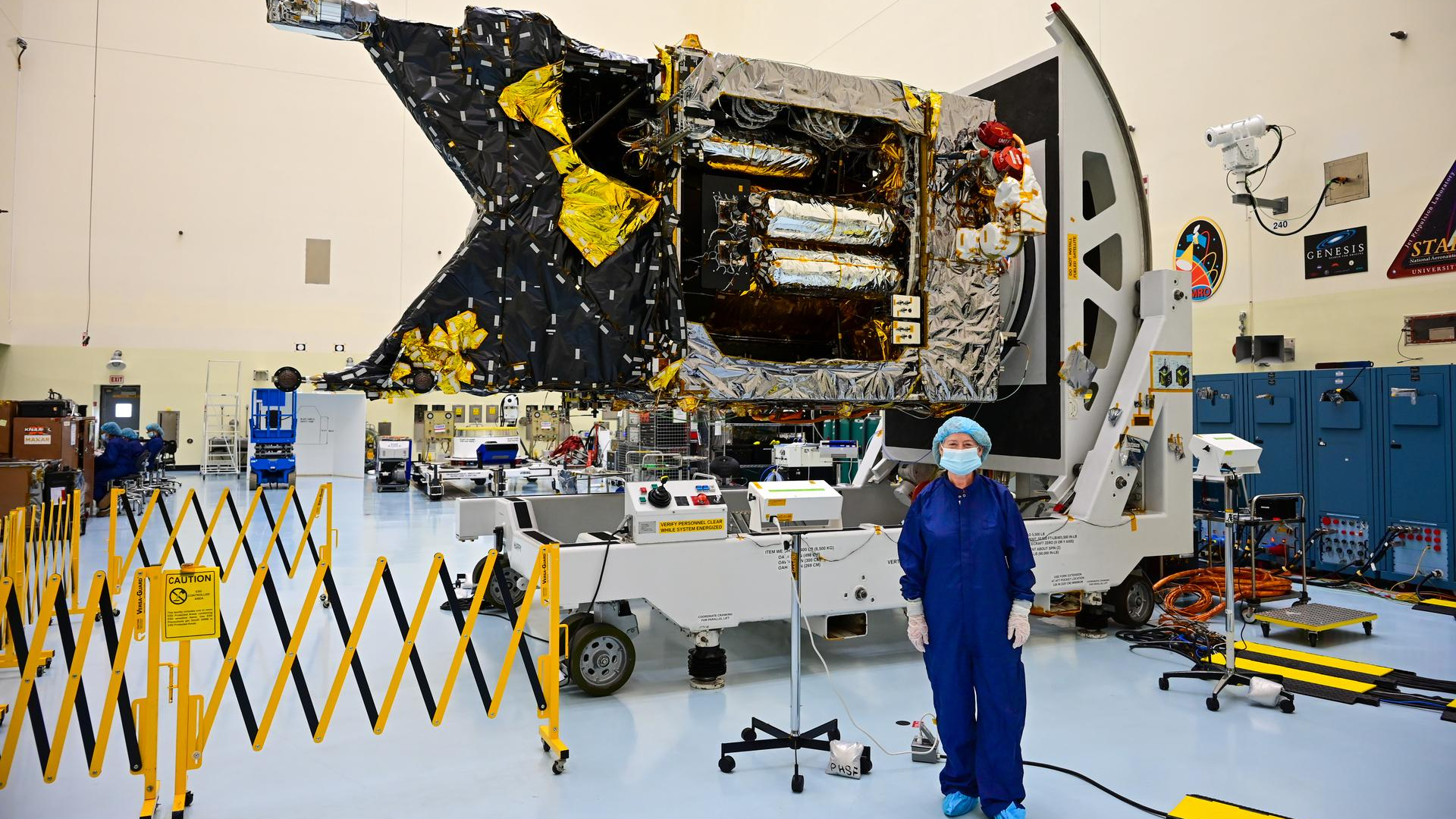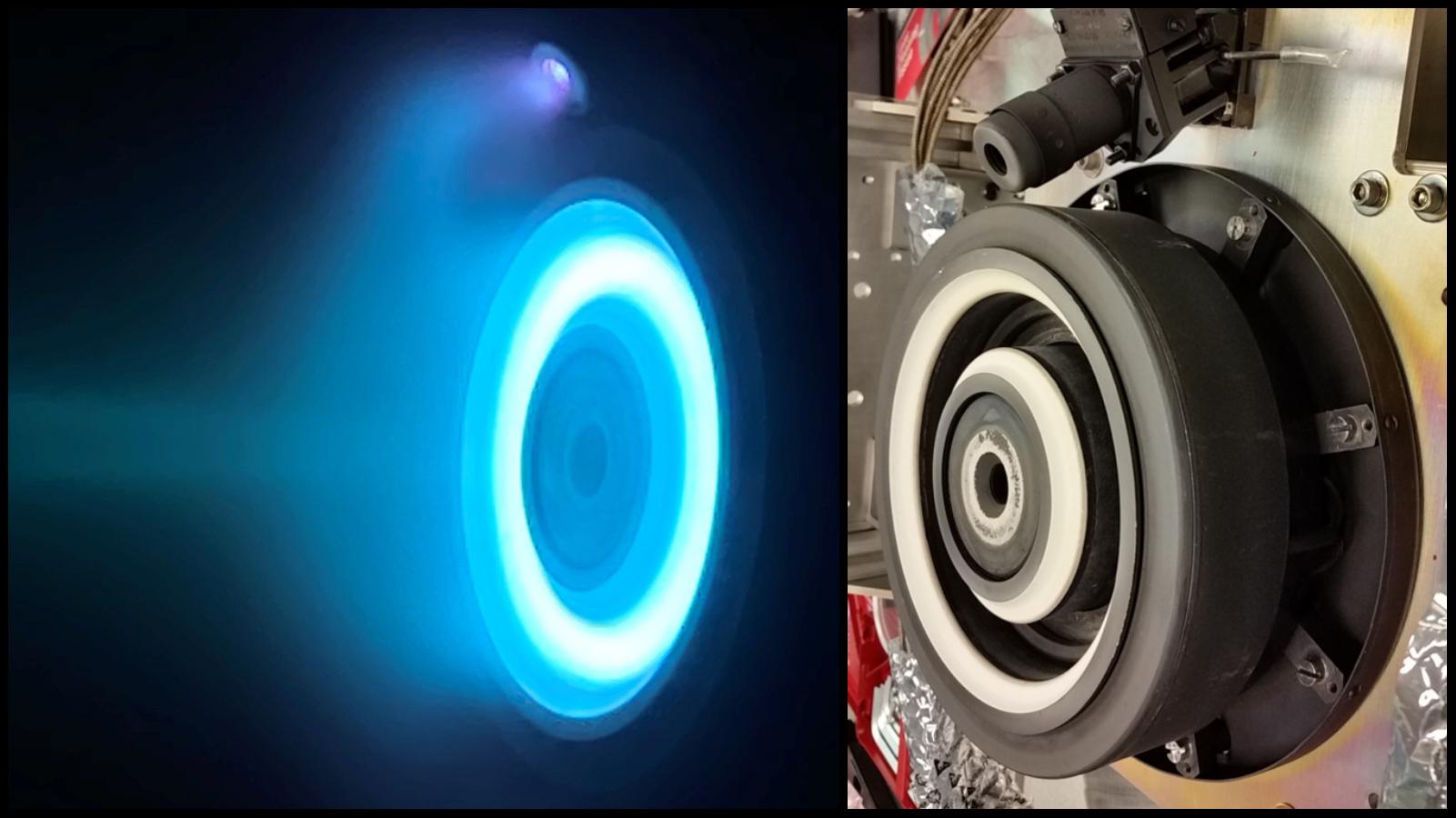Psyche is a NASA mission that will explore a 140-mile-wide (225 kilometers) metallic asteroid called 16 Psyche.
No spacecraft has ever visited an object like 16 Psyche, which is thought to be the exposed core of a demolished planet. The mission, which was originally anticipated to launch in 2022 but was delayed to 2023, is expected to provide important insight into planetary formation.
Along with a mission called Lucy, which launched on Oct. 16, 2021, and will visit primordial asteroids near Jupiter, Psyche was approved in January 2017 as part of NASA’s Discovery Program. “This is what Discovery Program missions are all about — boldly going to places we’ve never been, to enable groundbreaking science,” Thomas Zurbuchen, associate administrator for NASA’s Science Mission Directorate in Washington, D.C., said in a statement (opens in new tab) at the time.
Related: NASA’s DART asteroid-smashing mission: The ultimate guide
In May 2022, NASA announced that, due to a software issue, the Psyche mission would be postponed from its original launch date in August of the same year to late September, Space.com previously reported.
Continuing problems with the craft’s guidance, navigation and control (GNC) software led NASA to investigate whether the mission — which had already cost the agency more than $700 million — should continue or face cancellation. In late October 2022, NASA determined that the mission would continue and now targets a launch in October 2023.
Related: NASA won’t cancel Psyche asteroid mission, targets October 2023 launch
Psyche: The targeted metal asteroid
(opens in new tab)
The asteroid 16 Psyche, or simply Psyche, was only the 16th asteroid ever discovered, according to Arizona State University (ASU) (opens in new tab). The space rock was spotted in 1852 by Italian astronomer Annibale de Gasparis, who named it for the ancient Greek goddess of the soul.
Psyche has a mass of about 440 billion billion pounds (220 billion billion kilograms), making it 0.03% the mass of Earth’s moon, according to a 2002 paper in the journal Astronomy and Astrophysics (opens in new tab). It’s the 11th-most-massive known asteroid (opens in new tab) in the solar system, though it’s only a few hundredths the mass of behemoths such as Ceres and Vesta.
Unlike most bodies in the solar system — which are composed of mainly rock, ice or gas — the Massachusetts-size Psyche is mostly metal. It is up to 95% nickel and iron, a composition similar to that of Earth’s core. That metallic nature makes Psyche a compelling subject of study as researchers speculate about how the asteroid could have formed.
In one hypothetical scenario, 16 Psyche was once part of a protoplanet in the early solar system whose internal layers separated into a rocky mantle and an iron core, according to ASU. Multiple violent collisions billions of years ago may have cracked this entity open and stripped away its exterior, leaving only a misshapen metal lump behind. Much of the Psyche spacecraft’s mission will entail scanning the asteroid for clues that either support or reject this story.
Psyche: The NASA spacecraft

(opens in new tab)
NASA’s Psyche probe is 81 feet (25 meters) long and 24 feet (7 m) wide, making it roughly the size of a tennis court with its solar panels extended, according to ASU. The body of the spacecraft, where all its instruments are located, is about as big as a golf cart.
The spacecraft will carry several instruments. According to ASU, they include two high-resolution cameras and a spectrometer to determine the asteroid’s composition. In addition, Psyche will sport a magnetometer to check if the asteroid has a remnant magnetic field, as well as an instrument to measure the space rock’s gravitational field with high precision. The spacecraft is also equipped with sophisticated new laser communication technology that NASA hopes to use on future missions.
After it is launched atop a SpaceX Falcon Heavy rocket, the Psyche probe will use low-thrust solar electric propulsion to conduct a gravity assist past Mars.

(opens in new tab)
The original mission plan calls for the Psyche spacecraft to spend 21 months orbiting the asteroid while capturing the first-ever images of a mainly metal body. Using its instruments, the probe will map and study the asteroid to help researchers determine how it came to be.
Data from Psyche will help astronomers figure out how terrestrial planets form, according to NASA’s mission overview (opens in new tab). It is difficult to observe the core of a rocky planet such as Earth, because the core lies far below the planet’s mantle and crust. By studying 16 Psyche up close, researchers hope to better understand how collisions, accretion and time work to create worlds like our own.
Is Psyche canceled?
NASA’s Psyche asteroid mission has not been canceled. The project survived its “continuation/termination” review as of September 2022, meaning it was not scrapped, Space.com previously reported. The space agency will continue developing the spacecraft and its software and now expects the mission to launch in October 2023.
In the June 2022 announcement of the launch delay (opens in new tab), NASA revealed that the major problems were with the spacecraft’s GNC software, which is crucial for controlling the orientation of the spacecraft as it flies and is used to point the spacecraft’s antenna toward Earth to return data and accept commands from mission control. In addition, the GNC software is necessary to aim Psyche’s solar electric propulsion system.
The issues weren’t fixable in time for a 2022 launch, and with that launch window missed, the spacecraft will have to take an altered path to its metallic destination. The 2022 liftoff would have brought Psyche to its asteroid target in early 2026, but a 2023 launch pushes the craft’s arrival to August 2029, NASA officials said in their statement about the delay.
In another tweak to the final plans, NASA’s Janus small-satellite mission, which is designed to study a pair of binary asteroid systems, may not be able to hitch a ride to space with Psyche as it would have on a 2022 launch. “NASA continues to assess options” for Janus, officials wrote.
But NASA’s Deep Space Optical Communications may still fly with Psyche in 2023. That ride-along mission is integrated into the asteroid probe and can’t be disentangled as easily.
Meanwhile, a separate mission to Venus has been delayed due to Psyche’s postponement. VERITAS had been targeted for liftoff in 2027 but now won’t launch earlier than 2031. The VERITAS spacecraft will use radar to map Venus’ surface from orbit in great detail, Space.com previously reported.
Additional resources
For more information about Psyche’s trajectory and why it matters that the mission missed its optimal launch window, head to this article from WIRED (opens in new tab). To read more about the literal goldmine that an asteroid like Psyche could represent, try this article from Smithsonian Magazine (opens in new tab). Or, if you’d like to learn more about the people behind the mission, check out “A Portrait of the Scientist as a Young Woman (opens in new tab),” a 2022 book by planetary scientist Lindy Elkins-Tanton, Psyche’s principal investigator.
Bibliography
Asteroid 16 psyche | psyche mission—A mission to a metal world. (2021, October 2). Psyche Mission; Arizona State University. https://psyche.asu.edu/mission/the-asteroid/ (opens in new tab)
Greicius, T. (2021, December 22). Psyche overview [Text]. NASA. http://www.nasa.gov/mission_pages/psyche/overview/index.html (opens in new tab)
Kuzmanoski, M., & Kovačević, A. (2002). Motion of the asteroid (13206) 1997GC22 and the mass of (16) Psyche. Astronomy & Astrophysics, 395(2), L17–L19. https://doi.org/10.1051/0004-6361:20021444 (opens in new tab)
Northon, K. (2017, January 4). Nasa selects two missions to explore the early solar system [Text]. NASA. http://www.nasa.gov/press-release/nasa-selects-two-missions-to-explore-the-early-solar-system (opens in new tab)
Psyche spacecraft instruments & science investigations. (2022, May 5). Psyche Mission; ASU. https://psyche.asu.edu/mission/instruments-science-investigations/ (opens in new tab)

